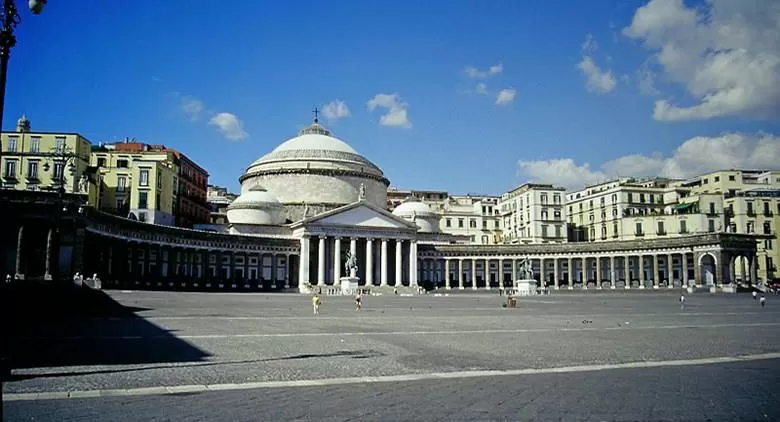The history of Piazza del Plebiscito dates back to the 18th century, during the reign of King Charles III of Bourbon, when the decision was made to create a grand square in the heart of Naples. The aim was to establish a majestic and symbolic space that could represent royal power and celebrate the Bourbon monarchy. The architect entrusted with designing the square was Luigi Vanvitelli, already renowned for his work on the Royal Palace of Caserta.
Vanvitelli’s design envisioned the construction of a monumental square of grand proportions, surrounded by buildings of political and religious significance. However, the practical realization of the square mainly occurred during the reign of Ferdinand IV, Charles III’s successor.
The construction of the square took several years and underwent various phases of work. One of the most significant architectural elements of the square is the Royal Pontifical Basilica of San Francesco da Paola, built between 1817 and 1836 on the eastern side of the square. This imposing neoclassical church, inspired by the Pantheon in Rome, became the symbol of the square.
On the opposite side of the square stands the Royal Palace of Naples, a sumptuous royal residence dating back to the 17th century, which was expanded and enriched over the centuries.
The name “Plebiscito” was given to the square following the plebiscite of 1860 when the Neapolitan people were called to vote for the annexation of the Kingdom of the Two Sicilies to the Kingdom of Italy.
Over the decades, Piazza del Plebiscito has witnessed numerous historical, political, and cultural events, becoming one of the most important and symbolic locations in Naples. Today, it continues to be a significant tourist attraction and a focal point for the city’s social and cultural life.

